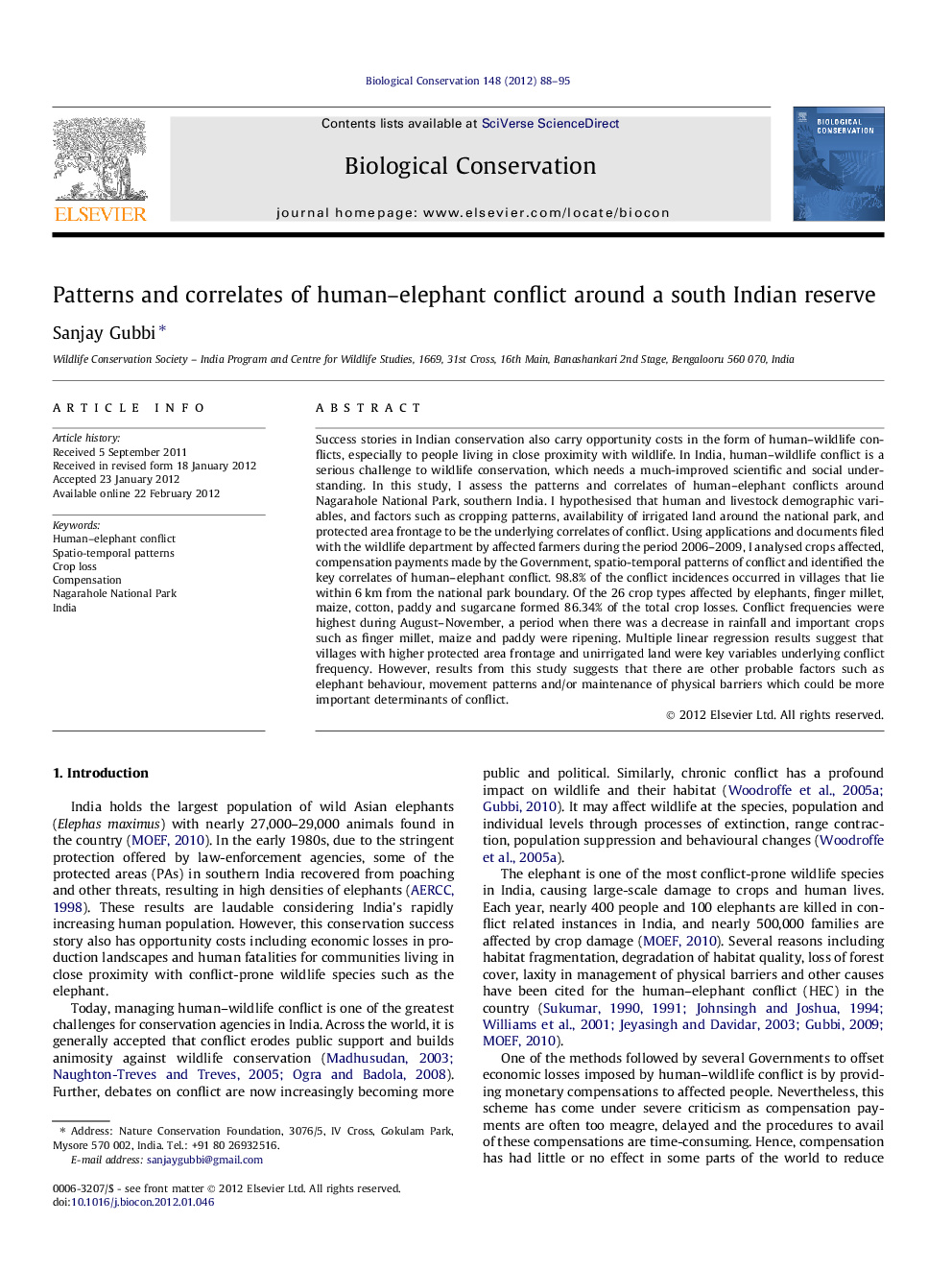| Article ID | Journal | Published Year | Pages | File Type |
|---|---|---|---|---|
| 4385497 | Biological Conservation | 2012 | 8 Pages |
Success stories in Indian conservation also carry opportunity costs in the form of human–wildlife conflicts, especially to people living in close proximity with wildlife. In India, human–wildlife conflict is a serious challenge to wildlife conservation, which needs a much-improved scientific and social understanding. In this study, I assess the patterns and correlates of human–elephant conflicts around Nagarahole National Park, southern India. I hypothesised that human and livestock demographic variables, and factors such as cropping patterns, availability of irrigated land around the national park, and protected area frontage to be the underlying correlates of conflict. Using applications and documents filed with the wildlife department by affected farmers during the period 2006–2009, I analysed crops affected, compensation payments made by the Government, spatio-temporal patterns of conflict and identified the key correlates of human–elephant conflict. 98.8% of the conflict incidences occurred in villages that lie within 6 km from the national park boundary. Of the 26 crop types affected by elephants, finger millet, maize, cotton, paddy and sugarcane formed 86.34% of the total crop losses. Conflict frequencies were highest during August–November, a period when there was a decrease in rainfall and important crops such as finger millet, maize and paddy were ripening. Multiple linear regression results suggest that villages with higher protected area frontage and unirrigated land were key variables underlying conflict frequency. However, results from this study suggests that there are other probable factors such as elephant behaviour, movement patterns and/or maintenance of physical barriers which could be more important determinants of conflict.
► Evaluated human–elephant conflict frequencies using compensation records. ► Conflict frequency rose with drop in rainfall when key crops were in inflorescence. ► Conflict was minimal during the drier periods. ► Scarce resources within PA and crops such as sugarcane were not drivers of conflict. ► Animal behaviour, upkeep of physical barriers could be vital causes of conflict.
